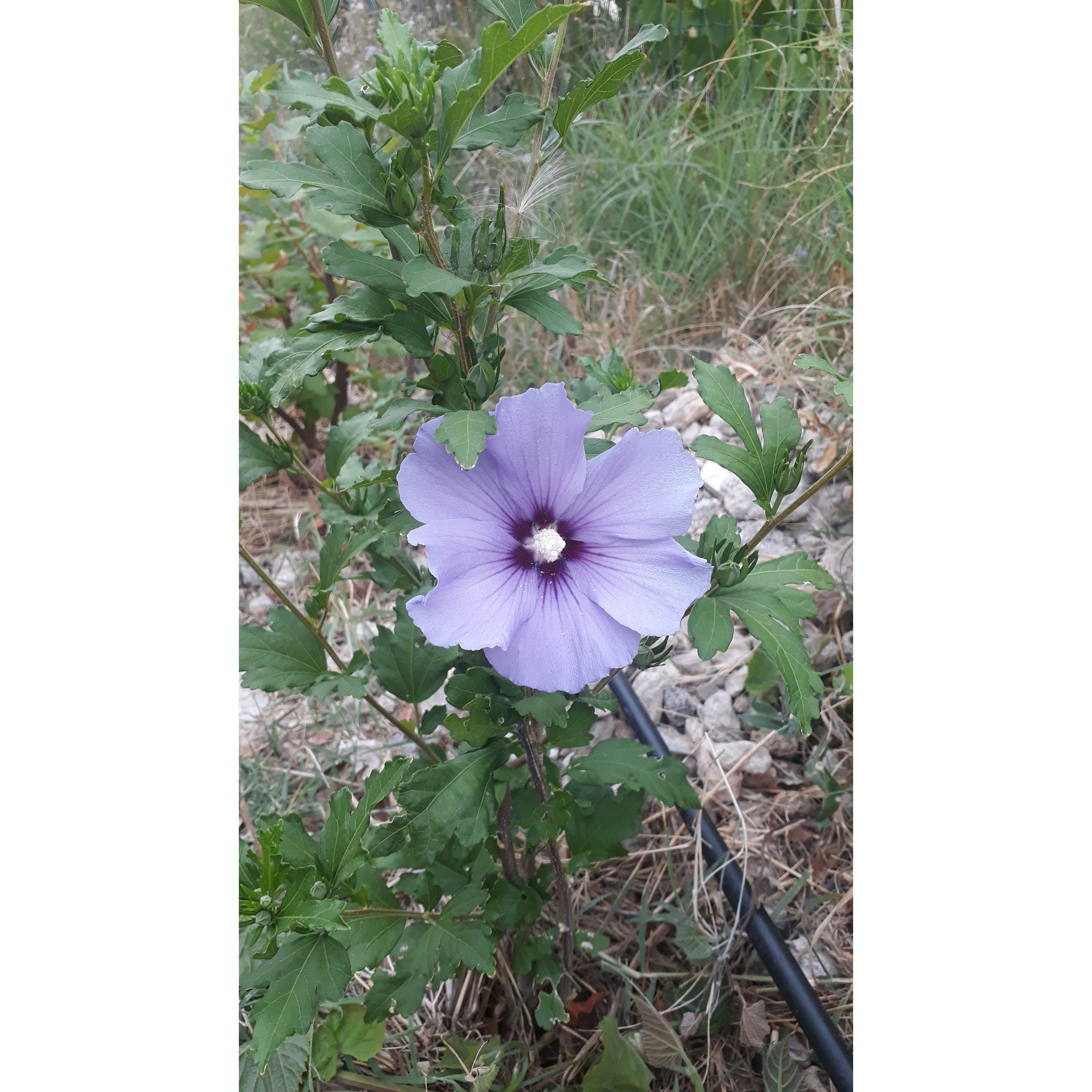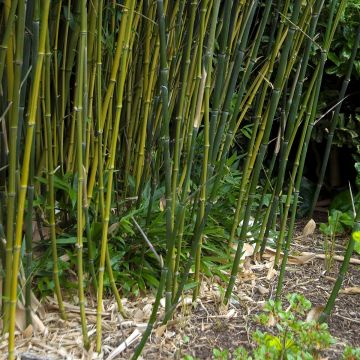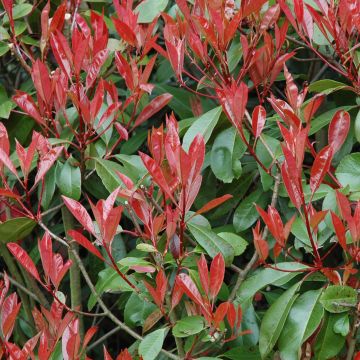

Hibiscus syriacus Oiseau Bleu - Rose of Sharon


Hibiscus syriacus Oiseau Bleu - Rose of Sharon


Hibiscus syriacus Oiseau Bleu - Rose of Sharon


Hibiscus syriacus Oiseau Bleu - Rose of Sharon
View more pictures
Hide images

Hélène G.

Althea 3 months after planting
Hélène G. • 34 FR

Hélène G.

Althea 2 months after planting
Hélène G. • 34 FR

Rose-Marie D.

BLUE BIRD
Rose-Marie D. • BE
Hibiscus syriacus Oiseau Bleu - Rose of Sharon
Hibiscus syriacus Oiseau Bleu (Marina)
Common Hibiscus, Rose of Sharon, Syrian ketmia, St Joseph's rod, Garden Hibiscus
The tree arrived in very good condition. I repotted it and placed it on a very sunny balcony, and it's doing well.
Katia , 26/06/2025
Special offer!
Receive a €20 voucher for any order over €90 (excluding delivery costs, credit notes, and plastic-free options)!
1- Add your favorite plants to your cart.
2- Once you have reached €90, confirm your order (you can even choose the delivery date!).
3- As soon as your order is shipped, you will receive an email containing your voucher code, valid for 3 months (90 days).
Your voucher is unique and can only be used once, for any order with a minimum value of €20, excluding delivery costs.
Can be combined with other current offers, non-divisible and non-refundable.
Home or relay delivery (depending on size and destination)
Schedule delivery date,
and select date in basket
This plant carries a 24 months recovery warranty
More information
We guarantee the quality of our plants for a full growing cycle, and will replace at our expense any plant that fails to recover under normal climatic and planting conditions.

Would this plant suit my garden?
Set up your Plantfit profile →
Description
The Hibiscus syriacus Blue Bird is a bush with an upright habit and is one the hardiest hibiscus varieties. The Blue Bird variety is appreciated for its abundant and extended flowering from summer to the first frost and for its decorative flowers. It is a plant that constantly forms new flowers. From July to October, abundant large single flowers measuring 4 to 8 cm (1.6 to 3.1 in) in diameter emerge from the axils of the leaves on the current year's shoots. These solitary trumpet-shaped flowers are a bright blue with a dark red heart. They consist of a corolla with 5 lanceolate petals and a long white tube formed by 5 fused stamens in the centre. These flowers close at night.
The Rose of Sharon produces erect branches with bushy deciduous leaves measuring 6 to 10 cm (2.4 to 3.9 in) long that appear in late spring. The foliage is bright green. The well-cut leaves have 3 lobes and are serrated. The Blue Bird hibiscus, also known as Garden Althea, can reach a height of 3 m (9 ft 10 in) at maturity. It is a bush that attracts butterflies. Native to India and China, it can be found in English cottages and even in city gardens as it tolerates pruning very well.
Hibiscus can be grown both as a solitary plant and in shrub beds or hedges. As a solitary plant, it beautifies terraces and balconies in pots and containers. In groups, it pairs well with other varieties. It can be mixed into flowering hedges, whether trimmed or untrimmed. The Rose of Sharon is the emblem of South Korea.
Hibiscus syriacus Oiseau Bleu - Rose of Sharon in pictures




Plant habit
Flowering
Foliage
Botanical data
Hibiscus
syriacus
Oiseau Bleu (Marina)
Malvaceae
Common Hibiscus, Rose of Sharon, Syrian ketmia, St Joseph's rod, Garden Hibiscus
Cultivar or hybrid
Planting and care
The Hibiscus syriacus Oiseau Bleu prefers full sun and should be sheltered from cold drafts. You can also plant it in partial shade, but it needs a long, hot summer for optimal flowering. Plant it in fertile, humus-rich, and moist but well-draining soil. The plant is drought-resistant and can withstand limestone. Although very hardy, in the first few years, protect it from frost by mulching before winter. Hibiscus is easy to grow and should be watered frequently in the summer to achieve beautiful blooms. To promote flowering, regularly remove faded flowers. In late winter every year, prune the bush by cutting it back to maintain its compact shape. Hibiscus may be prone to powdery mildew, and black aphids and mealybugs may attack it.
Planting period
Intended location
Care
Planting & care advice
-
, onOrder confirmed
Reply from on Promesse de fleurs
Similar products
Haven't found what you were looking for?
Hardiness is the lowest winter temperature a plant can endure without suffering serious damage or even dying. However, hardiness is affected by location (a sheltered area, such as a patio), protection (winter cover) and soil type (hardiness is improved by well-drained soil).

Photo Sharing Terms & Conditions
In order to encourage gardeners to interact and share their experiences, Promesse de fleurs offers various media enabling content to be uploaded onto its Site - in particular via the ‘Photo sharing’ module.
The User agrees to refrain from:
- Posting any content that is illegal, prejudicial, insulting, racist, inciteful to hatred, revisionist, contrary to public decency, that infringes on privacy or on the privacy rights of third parties, in particular the publicity rights of persons and goods, intellectual property rights, or the right to privacy.
- Submitting content on behalf of a third party;
- Impersonate the identity of a third party and/or publish any personal information about a third party;
In general, the User undertakes to refrain from any unethical behaviour.
All Content (in particular text, comments, files, images, photos, videos, creative works, etc.), which may be subject to property or intellectual property rights, image or other private rights, shall remain the property of the User, subject to the limited rights granted by the terms of the licence granted by Promesse de fleurs as stated below. Users are at liberty to publish or not to publish such Content on the Site, notably via the ‘Photo Sharing’ facility, and accept that this Content shall be made public and freely accessible, notably on the Internet.
Users further acknowledge, undertake to have ,and guarantee that they hold all necessary rights and permissions to publish such material on the Site, in particular with regard to the legislation in force pertaining to any privacy, property, intellectual property, image, or contractual rights, or rights of any other nature. By publishing such Content on the Site, Users acknowledge accepting full liability as publishers of the Content within the meaning of the law, and grant Promesse de fleurs, free of charge, an inclusive, worldwide licence for the said Content for the entire duration of its publication, including all reproduction, representation, up/downloading, displaying, performing, transmission, and storage rights.
Users also grant permission for their name to be linked to the Content and accept that this link may not always be made available.
By engaging in posting material, Users consent to their Content becoming automatically accessible on the Internet, in particular on other sites and/or blogs and/or web pages of the Promesse de fleurs site, including in particular social pages and the Promesse de fleurs catalogue.
Users may secure the removal of entrusted content free of charge by issuing a simple request via our contact form.
The flowering period indicated on our website applies to countries and regions located in USDA zone 8 (France, the United Kingdom, Ireland, the Netherlands, etc.)
It will vary according to where you live:
- In zones 9 to 10 (Italy, Spain, Greece, etc.), flowering will occur about 2 to 4 weeks earlier.
- In zones 6 to 7 (Germany, Poland, Slovenia, and lower mountainous regions), flowering will be delayed by 2 to 3 weeks.
- In zone 5 (Central Europe, Scandinavia), blooming will be delayed by 3 to 5 weeks.
In temperate climates, pruning of spring-flowering shrubs (forsythia, spireas, etc.) should be done just after flowering.
Pruning of summer-flowering shrubs (Indian Lilac, Perovskia, etc.) can be done in winter or spring.
In cold regions as well as with frost-sensitive plants, avoid pruning too early when severe frosts may still occur.
The planting period indicated on our website applies to countries and regions located in USDA zone 8 (France, United Kingdom, Ireland, Netherlands).
It will vary according to where you live:
- In Mediterranean zones (Marseille, Madrid, Milan, etc.), autumn and winter are the best planting periods.
- In continental zones (Strasbourg, Munich, Vienna, etc.), delay planting by 2 to 3 weeks in spring and bring it forward by 2 to 4 weeks in autumn.
- In mountainous regions (the Alps, Pyrenees, Carpathians, etc.), it is best to plant in late spring (May-June) or late summer (August-September).
The harvesting period indicated on our website applies to countries and regions in USDA zone 8 (France, England, Ireland, the Netherlands).
In colder areas (Scandinavia, Poland, Austria...) fruit and vegetable harvests are likely to be delayed by 3-4 weeks.
In warmer areas (Italy, Spain, Greece, etc.), harvesting will probably take place earlier, depending on weather conditions.
The sowing periods indicated on our website apply to countries and regions within USDA Zone 8 (France, UK, Ireland, Netherlands).
In colder areas (Scandinavia, Poland, Austria...), delay any outdoor sowing by 3-4 weeks, or sow under glass.
In warmer climes (Italy, Spain, Greece, etc.), bring outdoor sowing forward by a few weeks.

















































